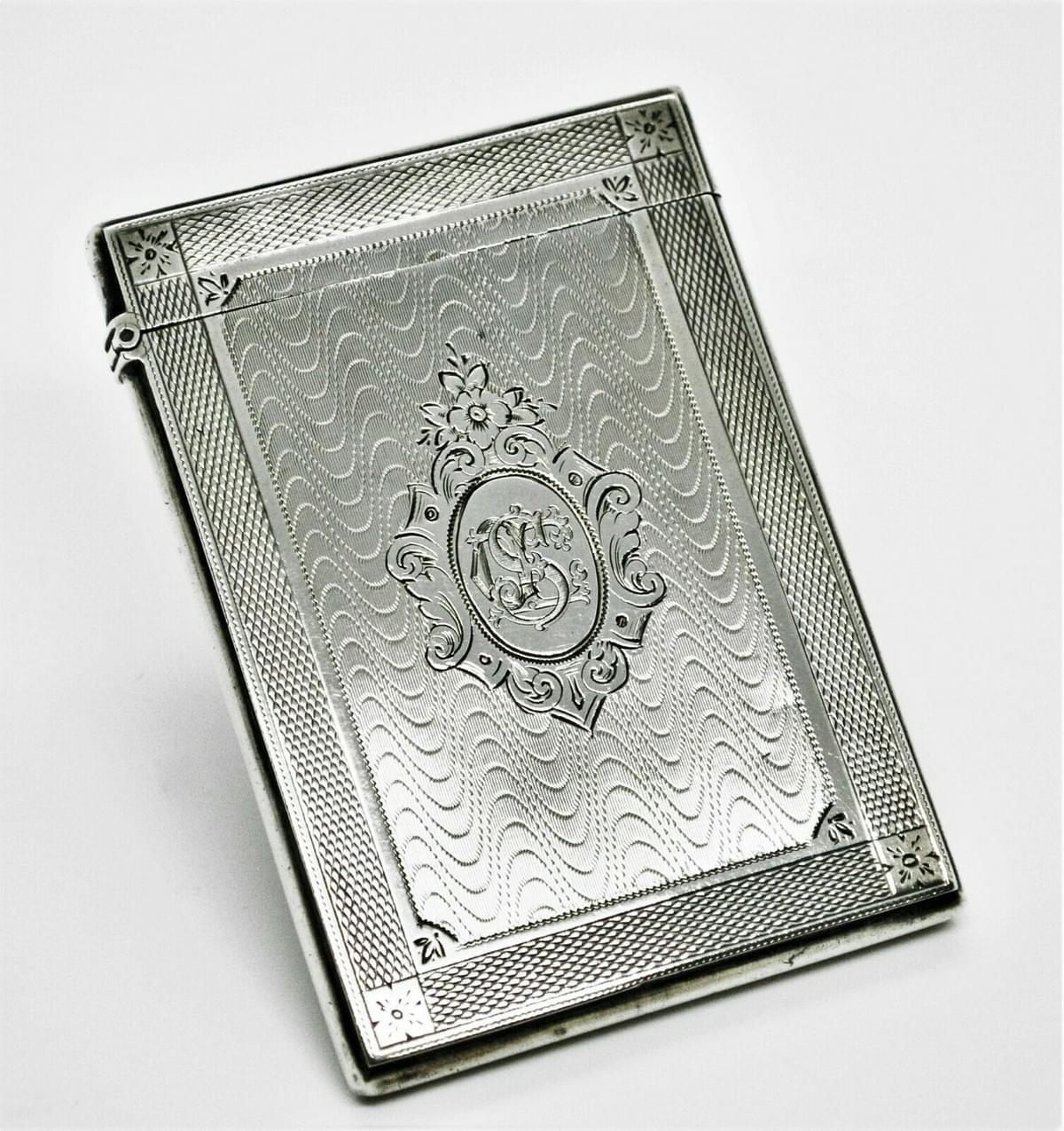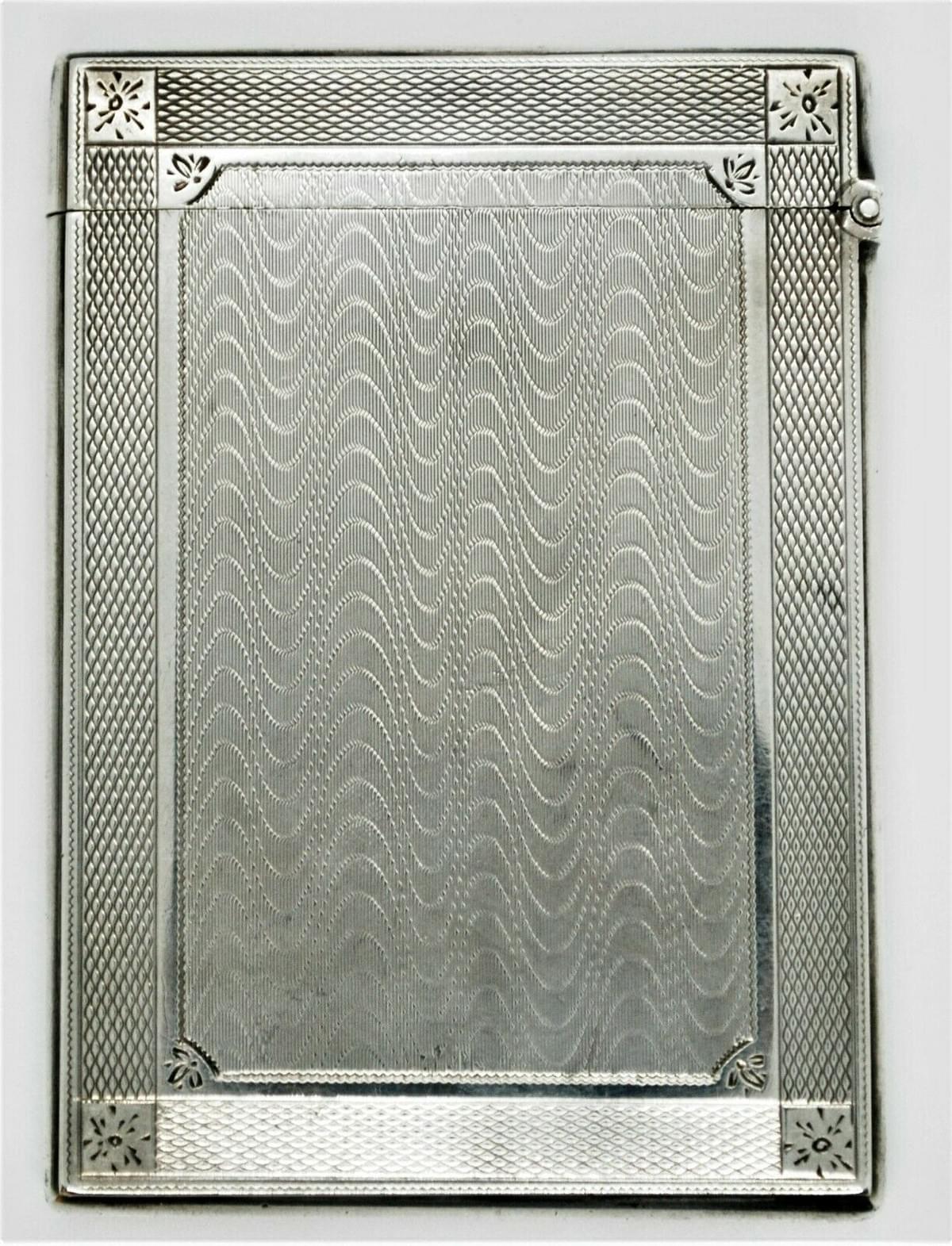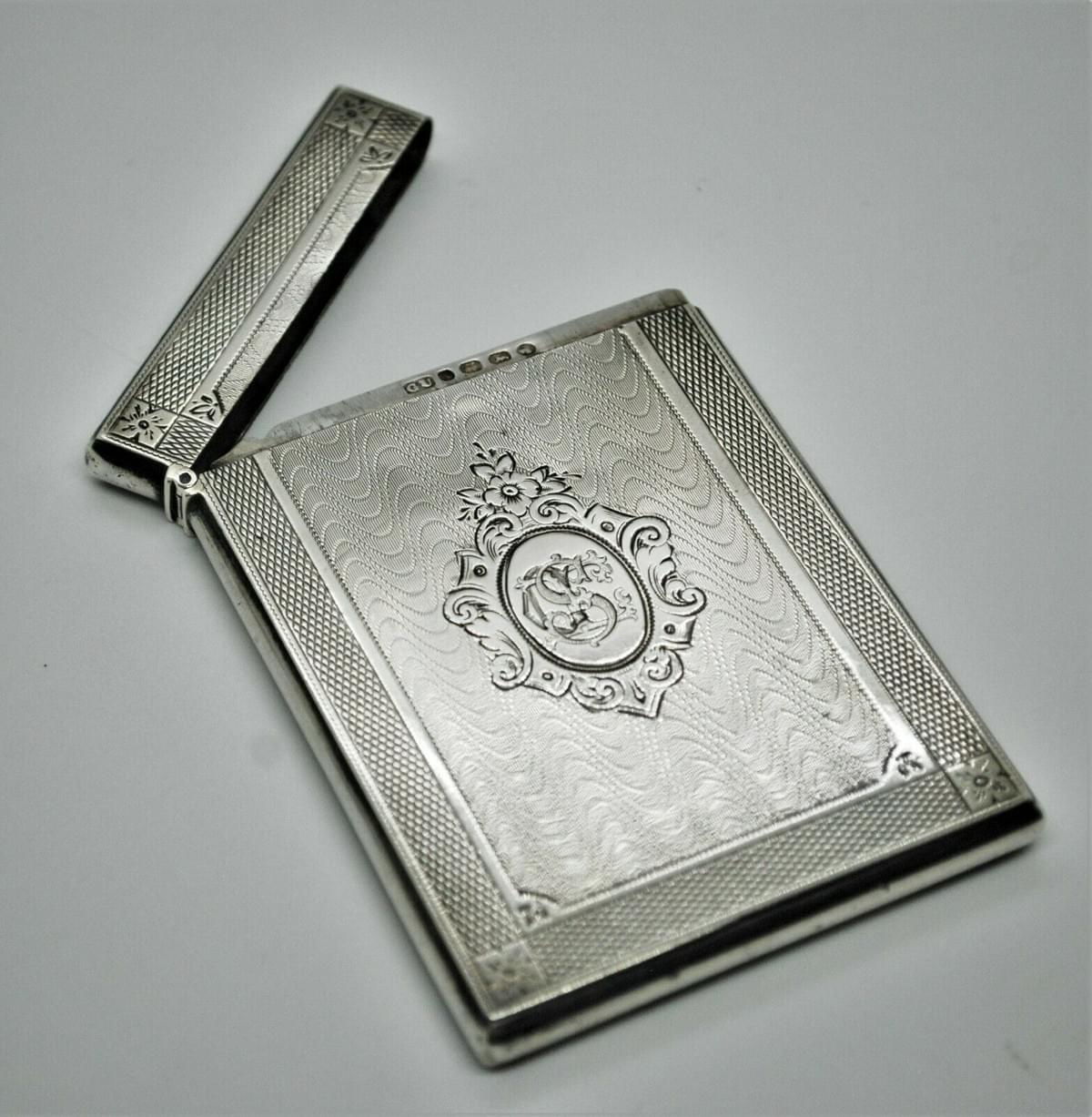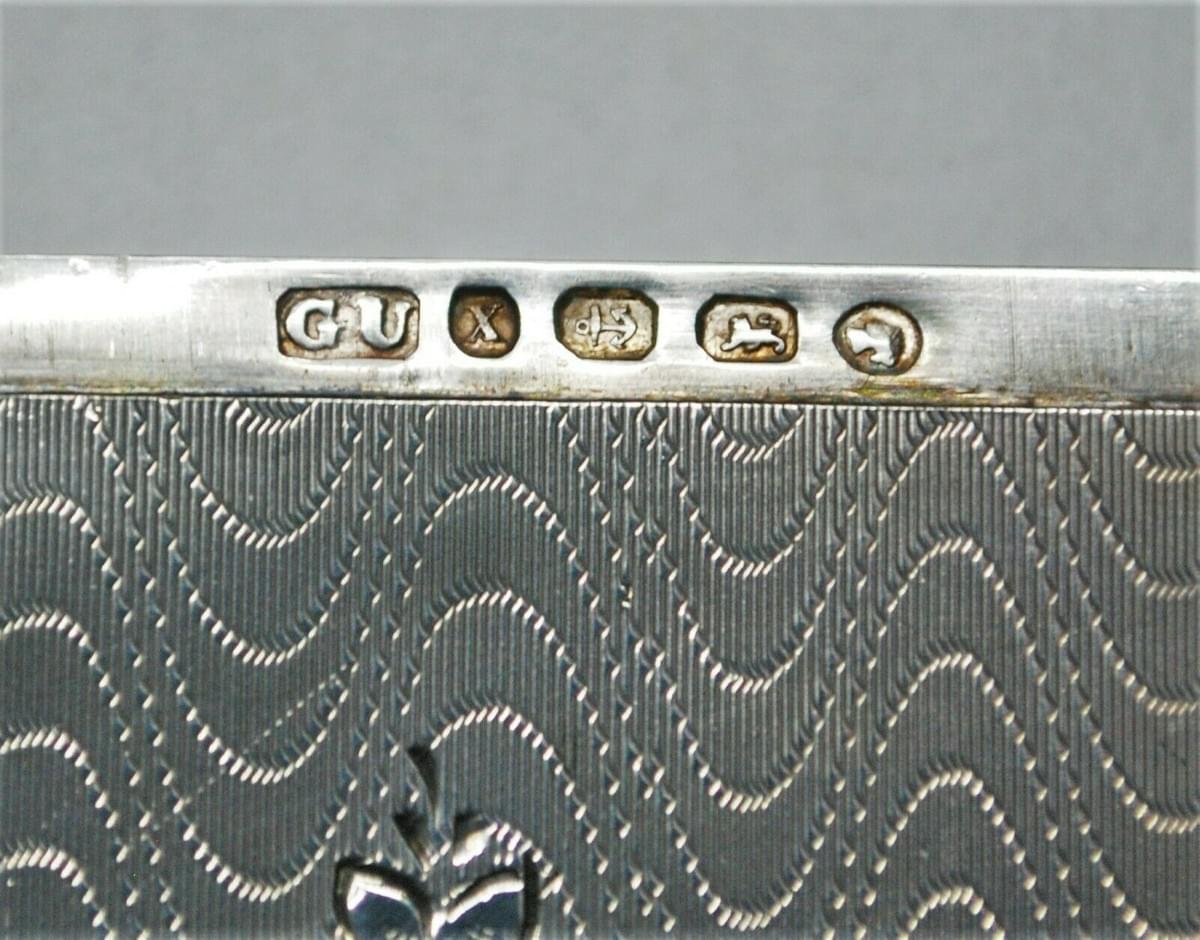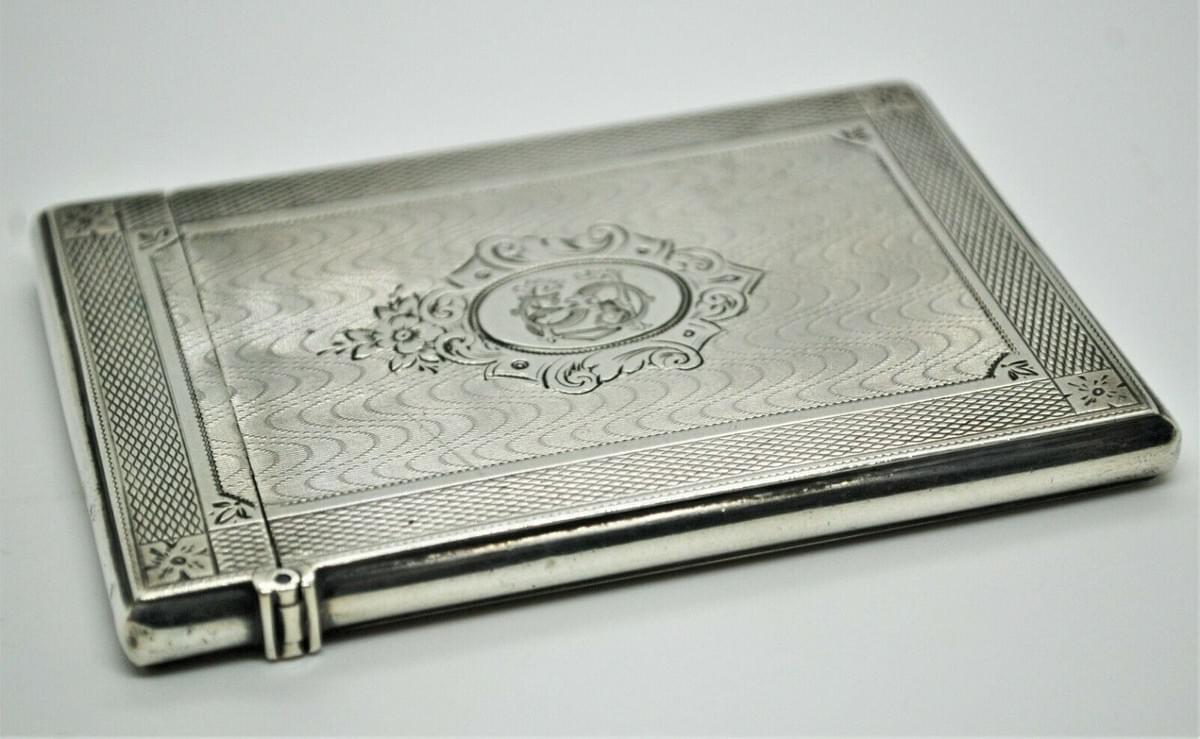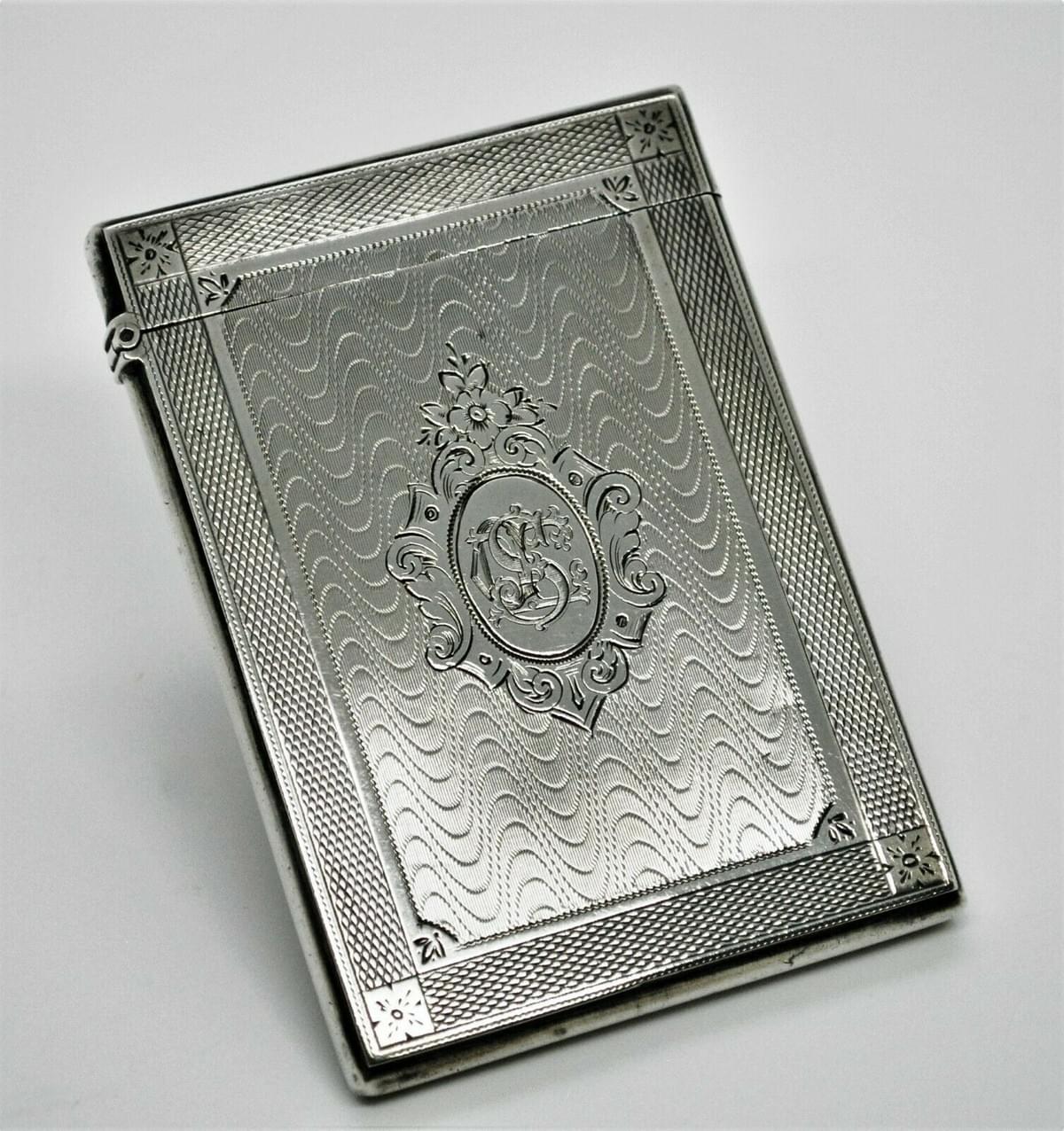Today, the featured item our online shop is an attractive 1872 Sterling Silver Calling Card Case by George Unite & Sons, Birmingham, England in very fine condition. This lovely example of a Victorian calling card or visiting card case has only a few, very small minor dents on the top of its lid and the bottom of the case as well as some polishing marks and superficial scratches that are commensurate with age.
The case was crafted by George Unite, an English silversmith who worked in Birmingham, England. From 1825, he worked in partnership with James Hilliard but registered his own maker's mark, "GU", with the Birmingham Assay Office on 8 August 1832. The Hilliard partnership ended before 1845 and Unite continued his business under his own name until 1865 when he formally registered his new firm George Unite and Sons.
Calling cards, also known as a visiting cards were small cards that were once used for social purposes. Before the 18th century, visitors making social calls left handwritten notes at the home of friends who were not at home. By the 1760s, the upper classes in France and Italy were leaving printed visiting cards decorated with images on one side and a blank space for hand-writing a note on the other. The style quickly spread across Europe and to the United States.
By the 19th century, men and women needed personalized calling or visiting cards to maintain their social status or to move up in society. These small cards, about the size of a modern-day business card, usually featured the name of the owner, and sometimes an address - and they were kept in highly decorated card cases.
Hallmarked :Sterling, London, 1872-73
Maker: George Unite & Sons
